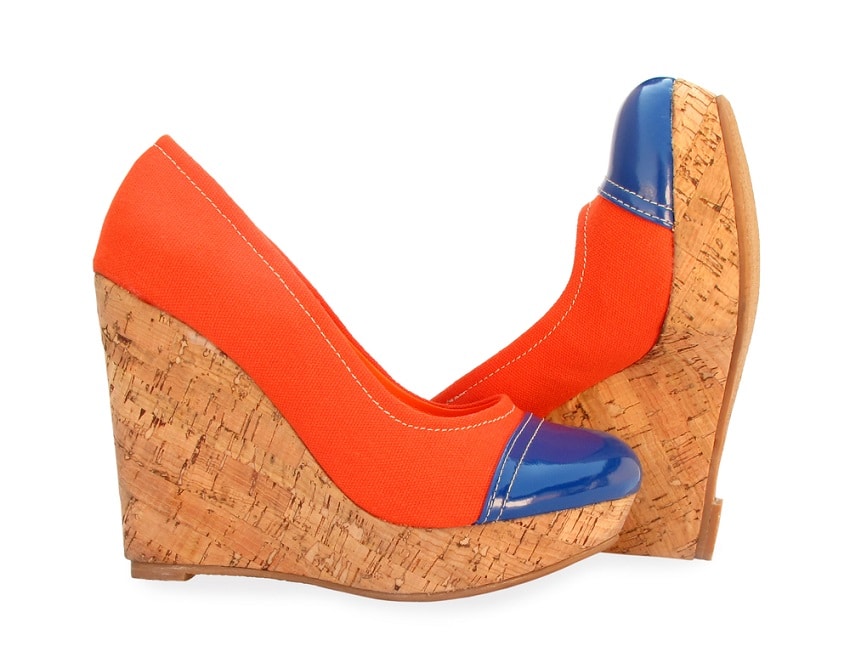
Shoes have come such a long way since people began wearing them. While they initially took on a very rough shape with the sole purpose of protecting our feet from the elements of nature, they now serve to display our individuality and sense of style while still keeping our feet off the ground.
Because the fashion industry has skyrocketed the popularity and use of footwear, these clothing items have gone from minimal material to a wide range of materials used. Shoes today incorporate the use of leather, plastic, rubber, suede, metal, wood, and more.
One of the more popular materials used to create various shapes and styles of shoes is cork. Shoe manufacturers often use cork to develop shoes with added inches of height, such as the ever-popular wedge shoe.
Today, we’re going to discuss the use of cork in shoes as well as how to clean cork shoes. This unique material requires different maintenance attention than average rubber soles, so let’s learn a little more about it.
What is Cork and Why is it Used?
Cork is a material commonly used in our world today. It is derived from nature, as you can find it in the various layers that make up bark tissue. Cork is so often used because it is impermeable, buoyant, elastic, and fire-retardant. Since it has such useful features, the material itself is considered to be very versatile.
One of the most common uses of cork is as a stopper for wine bottles. If you have ever opened a bottle of wine, you know that it comes with a stopper made entirely from cork that you have to pull out. Wine manufacturers have used cork for ages because it keeps the wine from seeping out and forms an excellent seal with its elastic properties.
About 60% of cork production goes towards stoppers.
Cork is also used in homes as insulation for both temperature control and sound control. It is built into the floors, ceilings, and walls of buildings to achieve quality insulation. It’s perfect for homes because cork is naturally fire-retardant, and it’s also easy to handle, safe, and non-allergenic.
Of course, we have all seen at least one corkboard in our lifetime – also referred to as a bulletin board. Many homes, offices, and classrooms incorporate the use of a corkboard to hold essential notes and pieces of paper with push pins.
While there are several additional uses of cork in our world today, we’re here to talk about its use in shoes.
Cork in Shoes
One of the main reasons why cork in continually used in shoes because it’s versatile and functional. What this means is what we mentioned earlier: it’s elastic, it’s buoyant, and it’s water-resistant. All of these factors make it a great choice when deciding what to construct quality and lasting shoes.
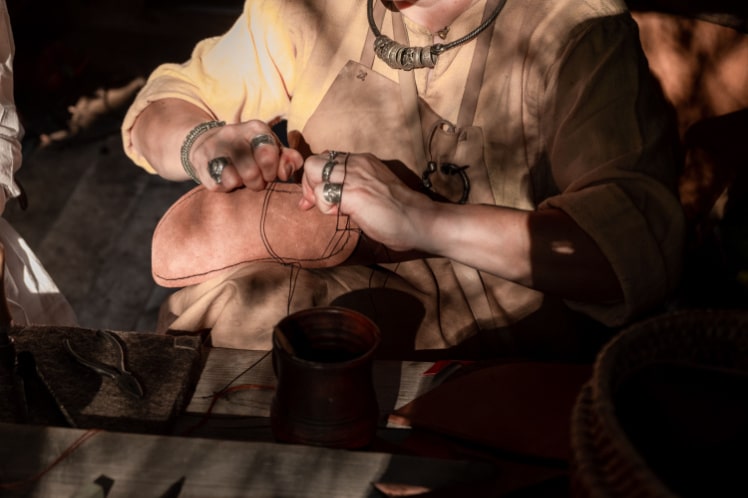
Cork is also great in terms of both comfort and health. Because cork is naturally elastic, it can easily mold to the shape of any individual’s foot. You may have noticed that over time, your cork shoes appear to have taken the shape of your arch – particularly in the heel and the ball of your foot.
This elasticity of the material is perfect for feet. In taking on your foot’s natural shape, cork supports your orthopedically and gives an extra layer of comfort. You may have heard women say that wedges are more comfortable than regular high heels; this is precisely why.
In addition, because cork is naturally elastic, it absorbs impact. This quality is fantastic for shoes, as it can provide relief to your feet and joints as you walk. Cork is also lightweight, so you won’t feel weighed down even if your entire shoe is made of the stuff.
This organic material is incredibly easy to work with, and in terms of shoes, it works exceptionally well with other materials. You can dress up a cork footbed with other colorful elements such as canvas, leather, suede, buckles, and zippers.
Finally, cork is a highly sustainable product. Since cork is found in bark, it is a naturally occurring material. This is already a positive because no harmful chemicals or processes are used to create it.
Additionally, cork is harvested similarly to various fruits like apples. Even though you have harvested cork from the bark of a tree, the tree will continue to grow and thrive. As the tree grows, it continues to product bark – and therefore, more cork.
Cork harvesting is a very closely monitored process, too. A cork oak tree will be harvested for its bark every nine years. Once a particular tree has completed its harvesting, it will be marked to display that it can’t be collected again for another nine years.
This careful process ensures that no trees are harmed in the harvesting of their bark. They are not cut down, they don’t take on damage, and they are not abused. Harvesting cork is entirely environmentally friendly, which can be a big deal to anyone who is pro-environment.
In fact, science and observation over the years have proven that the trees that get their bark stripped every nine years live as long as 150 years longer than those that do not. So, we can harvest cork for the benefit of both the fashion industry and the trees.
How to Clean Cork Shoes
After defining exactly what cork is and why it’s a great material to use in shoes, it’s easy to assume that our cork shoes will last us for a long time. This may be true, but a long-lasting pump requires more than just quality materials.
If you genuinely want your shoes to give you a good, long run, then you need to maintain them properly. This is factual for all shoes, but today we are going to focus on how to clean cork shoes. Dirt and accidents happen, so it’s a good idea to learn how to take care of them when they do.
The Process
The best way to clean cork shoes is a straightforward process that takes little time and a small amount of effort.
You might also like:
- How to Fix a Hole in a Shoe
- How to Clean Skechers Shoes (Expert’s Guide)
- How to Prevent Acrylic Paint from Cracking on Shoes?
- How to Stretch Suede Shoes
- How to Remove Scratches from Leather Shoes
1. Gather Your Materials
Start by gathering all of your materials. You’re going to need a bucket, water, detergent, and vinegar. You also need to get yourself something to scrub with. If you have a scrub brush, great! If not, you can also use an old toothbrush.
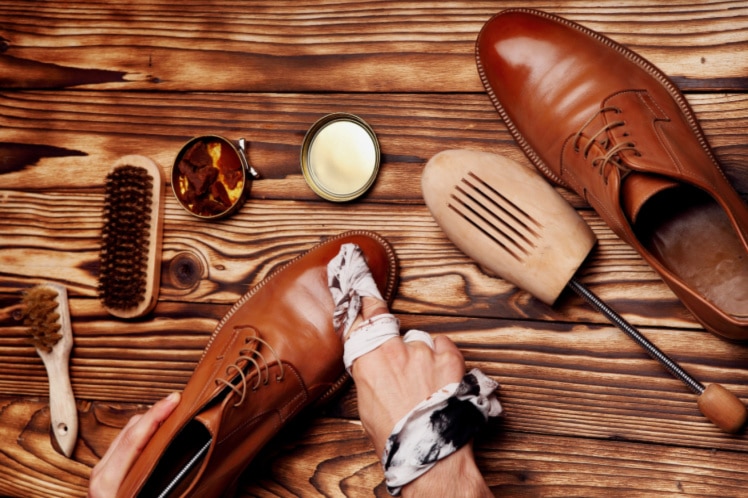
If your shoes aren’t too dirty and you don’t think they will require much scrubbing, you can also stick with a rag or washcloth to get the job done.
2. Mix the Cleaner
Once you have all of your materials, mix about a half a gallon of warm water with about five drops of detergent. Make sure that your cleanser is a mild one – there’s no need for harsh chemicals like bleach in this process. In fact, a strong detergent may serve to damage your shoes rather than clean them.
If you don’t have a mild detergent on hands, you can also use mild dish soap. Anything that says “non-toxic” is typically a good choice.
Slowly mix the two products together so as not to create bubbles or suds. Then, add half a cup of white vinegar and stir the mixture slowly again.
3. Cleaning Your Shoes
Take your washcloth and dip it into the liquid soap and vinegar mixture. Ring it out, so it’s not dripping, and use the cloth to gently remove any dirt or loose debris from the cork shoe. After you have removed as much as possible, you can move onto the scrub brush if necessary to remove any tougher marks, stains, or grime.
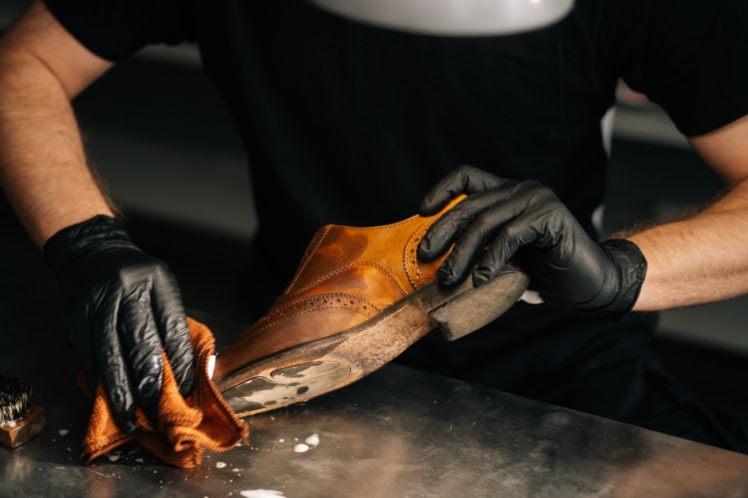
Dip the brush in the mixture, keeping it shallow as to not saturate it thoroughly. Shake off the excess liquid and use the brush to scrub off dirty areas. Use small, gentle, circular motions across the entirety of the shoe. Rinse your brush in the solution several times during the process to get rid of any dirt you pick up.
You can repeat this process once if needed, but try to avoid scrubbing anymore than that. Too much scrubbing and liquid at once can break the cork and damage your shoe.
After you have completed this process, take a dry, clean cloth and wipe away suds, water, and soap residue. Never rinse your shoes off in the soap mixture, as it can damage your shoes.
Set your shoes aside to dry for at least a full day. If you have found that your shoes have significant damage to them, you can gently sand them down after they have fully dried.
Read Also: How to Clean Used Shoes
Maintaining Cork Shoes
Aside from fairly regular or “as needed” cleaning, there are a few maintenance tips you can follow to ensure you get the longest lifespan from your cork shoes as possible.
Many different brands make special sealants made just for cork shoes. While your shoes are made with and already have a coating of sealant on them when you purchase them, you can add a layer of this sealant to ensure full protection.
You can put this sealant on your shoes from the start, but we recommend keeping an eye on your shoes to notice when the first sealing starts to fade. You will know this is happening when you see that the cork itself no longer appears shiny or polished.
At this time, you can go ahead and add another layer of your own sealant to extend your shoe’s lifespan. Continue this process as long as you have the shoe to protect it from the elements and keep it looking brand new.
To minimize the risk of additional damage, you should try to keep your cork shoes away from extreme heat. Not only can the cork take on damage from things like your fireplace or a hot car, but the soles of your shoes, along with any other materials used, can also be at risk.
Extreme heat situations can cause your shoe to warp, and it can also affect things like a glue that holds vital components of your shoe together. If left near a heater or in a hot car for an extended period of time, you may come back to find that your shoes no longer sit comfortably on your feet or that the fabric is peeling off.
This should go without saying, but you should never wash cork shoes in the washing machine or dry them in a dryer. Though you can do so with other kinds of shoes, doing this with cork shoes can completely ruin them for good.
Also, don’t forget to maintain the other areas of your cork shoes that may incorporate other materials. For example, a pair of wedges might have a cork heel, but the sole might be covered in suede, and the straps at the top could be a canvas or other fabric material.
These materials might require a different kind of care for cleaning, so you should look into the specifics before you go ahead and clean the entire shoe with a cork-specific solution. Materials such as suede and leather can easily take on damage if not cleaned properly, so be careful about the details.
You should also make sure you don’t accidentally harm any other materials while cleaning the cork of your shoe. Try to cover them with a washcloth or plastic to avoid saturating them in water, soap, or vinegar.
Deodorizing Cork Shoes
Since cork is so absorbent, there’s a good chance that after a long summer of fashionable and cute outfits, your favorite pair of wedges or cork sandals have taken on a bit of a smell. Rather than putting them away for the season and letting them sit in their own filth, you can use some of these tips to help deodorize them and leave them fresh for next spring.
Read Also: Best Shoe Deodorizer and Best Shoe Cleaners
1. Let Them Air Out
Try leaving your shoes outside in the direct sunlight for a day. Doing so can help freshen them up. The direct sunlight can help eliminate odor-causing bacteria, while the consistent flow of fresh air can help pull foul smells away. Leave them out in the sunshine for at least eight hours for this method to be effective.
2. White Vinegar
White vinegar is a known solution to ridding items of foul odors. Because of its high levels of acidity, white vinegar is perfect for foot and shoe odor to neutralize the smell and kill bacteria.
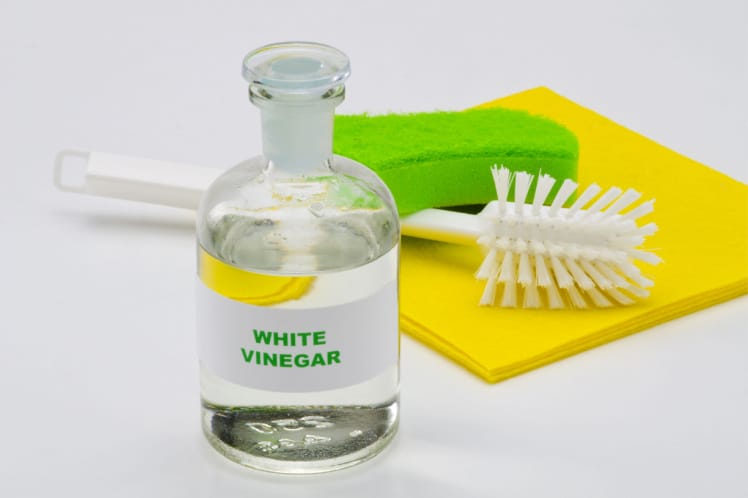
To help alleviate odors from your cork shoes, take some white vinegar and moisten a paper towel or a rag with it. Place the paper towel or cloth over the areas of the shoe that come into direct contact with your foot. Doing this will help target the places that take on the most sweat and bacteria.
Let the vinegar sit in these areas for at least six to eight hours. Remove the rag or paper towel and allow your shoes to dry if they feel wet fully. After that, they should smell fresh and be ready to go!
3. Baking Soda
Baking soda is another excellent solution to foot odor that has accumulated on your cork shoes. It’s a prevalent item, so there’s a good chance that you already have it in your house. Use it in combination with tea tree oil to attack odors at the source.
Mix about one teaspoon of tea tree oil with half a cup of baking soda. Pour the solution on the surface of the cork shoe where your foot comes into contact. Place your shoes in a shoebox with the lid secured and leave them for two or three days. When you pull them from the box, they should be fresh and smell good as new.
4. Put Your Shoes in the Freezer
Freezing your shoes can also help eliminate odors. This method is effective because as your feet sweat and shed skin particles, they actually create a highly sustainable environment for bacteria that causes odors.
When you freeze your cork shoes, you can kill the bacteria by keeping it at a low temperature for a long period of time. The bacteria won’t be able to survive at such low temperatures.
The best way to freeze your shoes is to place them in a large Ziploc bag and put them in the freezer for one to two days. After this time period has passed, you can take them out and place them in direct sunlight to help them warm back up.
5. Cat Litter
Finally, don’t be afraid to dive into your cat’s litter supply to freshen up your shoes. Cat litter, as we all know, is super absorbent and is made to get rid of bad smells. Pour some cat litter onto the soles of your cork shoes and let it sit in an enclosed box for a few days for a fresh scent.
Latest Post:
- Where Are Vans Made? (Ultimate Guide Revealed)
- How Much Do Shoes Weigh?
- Lights On, Troubles Gone: How to Fix LED Shoes Like A Pro
- Do Vans Run Big or Small? (All You Need To Know)
- Do Adidas Run Big, Small or True to Size?
Last Word
Today we have learned that cork is a surprisingly diverse and useful product. In addition to having several super common uses, from cork boards and wine stoppers to insulation and footwear, it’s also very environmentally friendly.
The process of collecting cork may be a fascinating one, but we’re more interested in sustaining the materials used in our shoes so we can keep rocking our kicks and showcasing our fashion sense.
Use these tips above and the cleaning method we talked about the ensure that your cork shoes live a long, happy life supporting your chic lifestyle.
